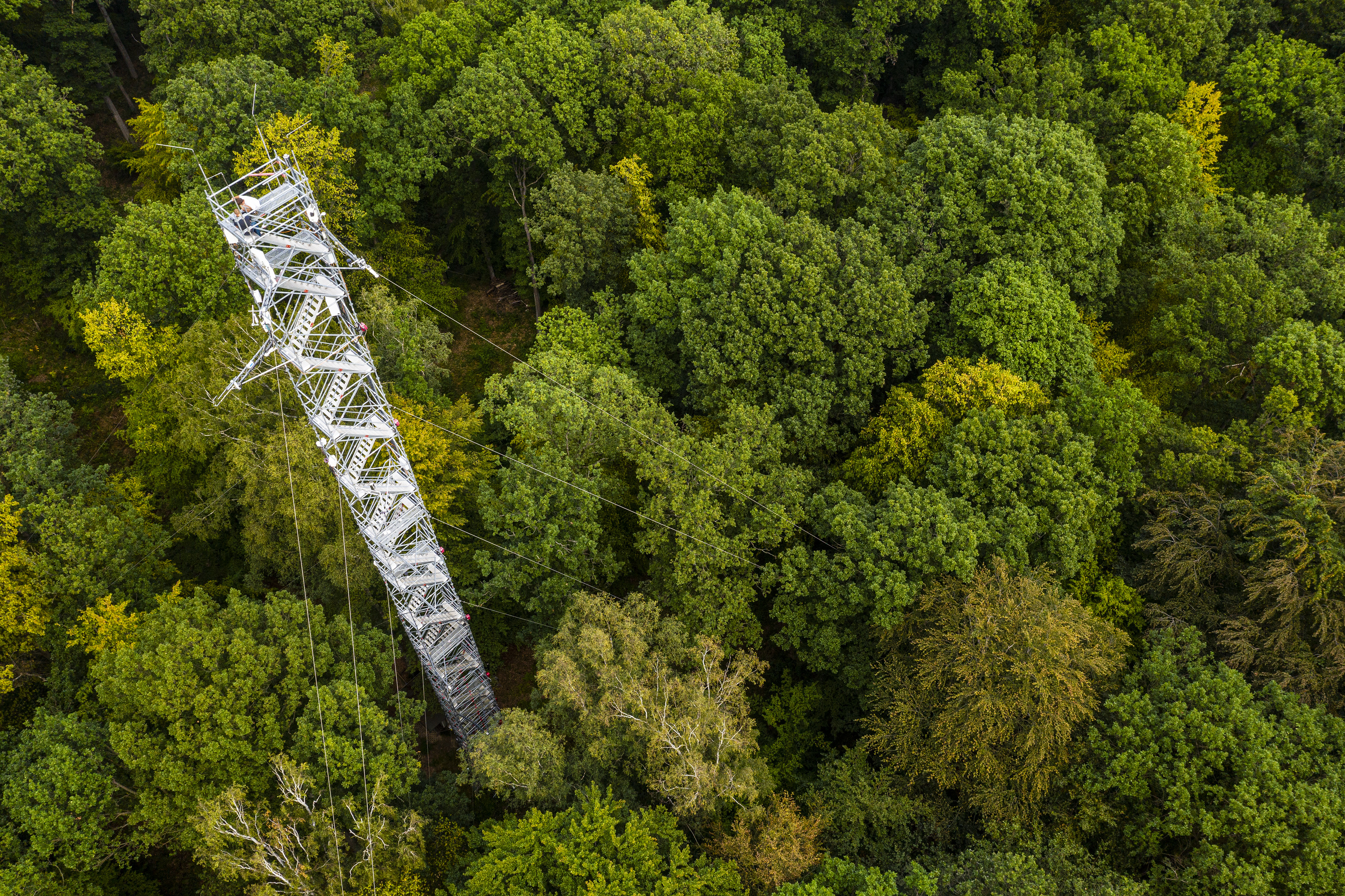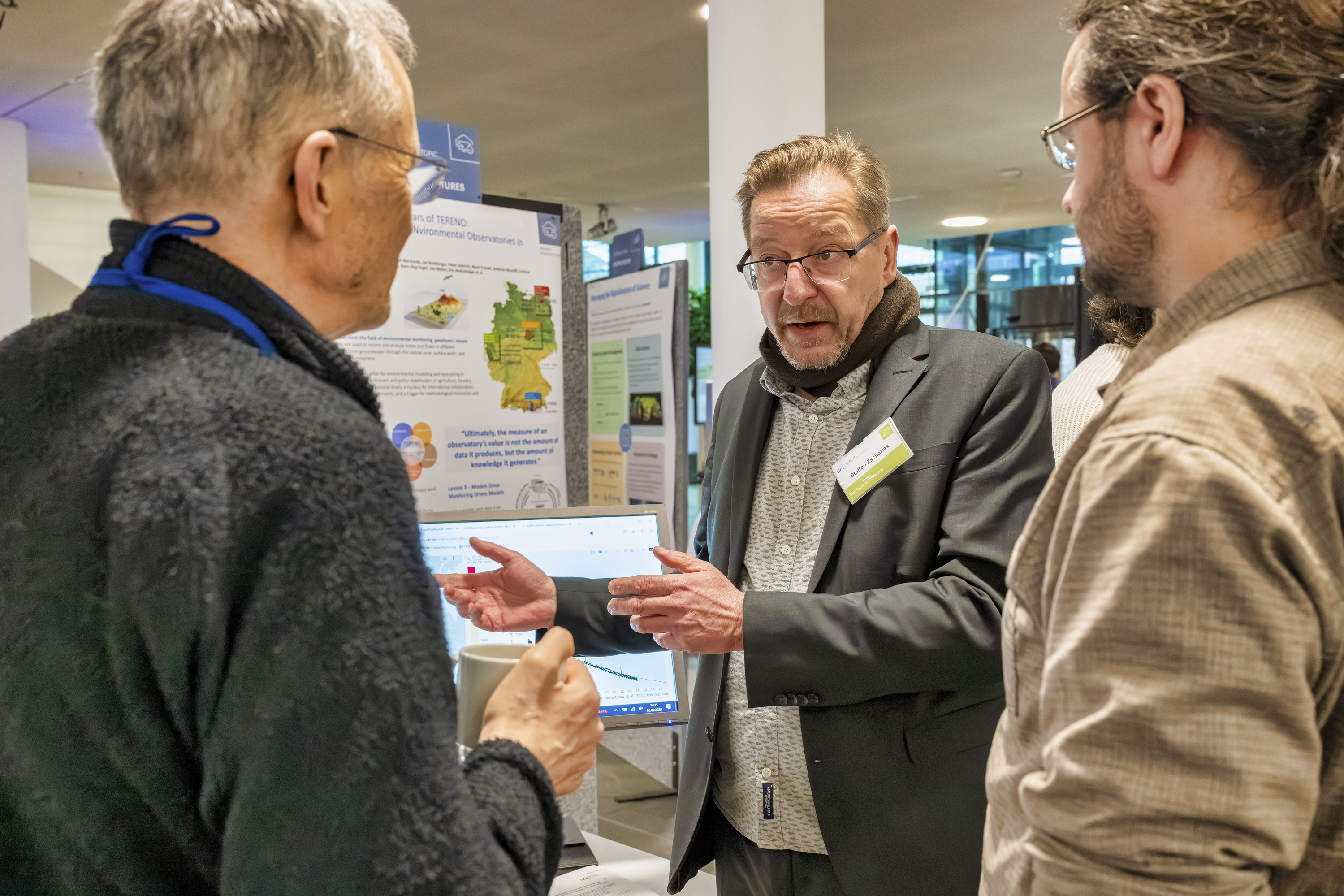eLTER will be a flagship for the European commitment to a progressive Global Environmental Policy
A conversation with one of eLTER’s leading researchers, Dr. Steffen Zacharias from the Helmholtz Centre for Environmental Research (UFZ), Germany
What would you like the eLTER community to know about you as a scientist, about your work and your involvement with eLTER?
I started my professional scientific career almost 30 years ago, when I started my doctorate in the field of soil physics. Since then, I have been active in the field of environmental research and since then my main scientific work has focused on soils, soil moisture and water in the landscape. However, since my earliest childhood I have been very close to nature, and as a passionate amateur ornithologist and nature photographer I naturally feel connected to the environmental sciences as a whole.
I've been coordinating one of the TERENO observatories in Germany since 2007, so I know about the challenges and opportunities of long-term environmental observation and the associated research infrastructures. I first came into contact with eLTER, or LTER-Europe, as it was at that time, in 2008 when I took over the lead of a Technological Expert Panel. Since then I have accompanied eLTER, and today I have the privilege of coordinating the process of standardisation and harmonisation of environmental observation in eLTER.
What is the origin of eLTER, what gap is it trying to fill, and why is the existence of eLTER important for humanity?
eLTER builds on the heritage and achievements of LTER-Europe. It builds in particular on the culture of collegial scientific cooperation across national borders and across disciplinary boundaries in environmental science that has been established in LTER-Europe.
So, what's the gap that eLTER is getting ready to fill? We are all aware of the major challenges facing humanity today as a result of long-term changes in the climate system and changes in land use. In the environmental sciences, it's pretty much agreed that we need to look at the big picture and consider the environmental system as a whole if we want to come up with effective solutions to these problems. Moreover, these challenges for humanity are not only systemic but also global in nature, and therefore require coordinated international action. On the other hand, the demand for environmental data is greater than ever. Climate change, pollution and biodiversity loss are challenges that need precise analysis and targeted action. We're now in the era of big data, and advances like satellite observation and AI-powered data processing are making it easier to collect and use this data for sustainable decision-making
Even though the European and international environmental research has already made huge strides, especially also when it comes to in situ research infrastructures operating long-term, there's still a lack of internationally agreed institutionalised structures and concepts, at least in Europe, to establish internationally harmonized, long-term research infrastructures that allow for capacity building by bringing together scientists from the different scientific communities and to integrate across disciplinary borders. However, the latter is an absolute necessity in order to gain a holistic understanding of the environmental system and the diverse interacting processes. It's imperative that we recognise that that is a fundamental pre-condition for the formulation of responses to the global environmental challenges we are facing.
eLTER is now taking on this incredible challenge and developing the basis for establishing a Europe-wide network of integrated environmental observatories. These observatories will record key processes at the same time in the geosphere, hydrosphere, atmosphere, biosphere and sociosphere on a site-specific basis. The data collection will follow jointly developed standards and protocols for the most important key variables and thus form the basis for a Europe-wide harmonised and standardised data set allowing for a holistic description of the state of the environment.
 The 50 m high Eddy-Flux Covariance Tower in the TERENO Observatory Harz/Central German Lowland
The 50 m high Eddy-Flux Covariance Tower in the TERENO Observatory Harz/Central German Lowland
Can you give me a concrete example of the value of long-term environmental observation in practice?
I'll give you a recent example from our TERENO Observatory research. One of our flagship activities there is a reservoir observatory that we set up in 2011 in cooperation with regional water management and supply stakeholders. The dam is the largest drinking water reservoir in Germany and provides drinking water to more than 1 million people in Central Germany. We've been measuring all relevant water quality and quantity variables there for 14 years now. The data we collect is also very important for running and managing the dam. Between 2018 and 2020, the region in central Germany was hit by a really bad drought and resulting forest dieback. The area where the reservoir is lost 70% of its original forest cover. The results, especially for water quality, are huge. The levels of nutrients entering water bodies have increased a lot. Thanks to the TERENO long-term data, scientists could study these effects directly and promptly. This was the basis for providing key information on these and future developments in a very timely manner, information that is essential for managing drinking water reservoirs in particular. The TERENO scientists were able to react so quickly thanks to all the info we'd collected over many years on water and nutrient fluxes before the drought.
What could eLTER be in the year 2100? Best case scenario.
Hey, 2100? You're really pushing my prophetic abilities with this question! Well, at best it is set to become a leading light in European environmental research. eLTER, as a European research infrastructure, will be a flagship for the European commitment to a progressive global environmental policy. It will be the go-to place for collecting data on the state of the European environment. It will be a key partner in developing political instruments for environmental protection and adaptation to climate change. And it will monitor the effectiveness of political decisions to combat climate change, biodiversity loss and environmental pollution. eLTER will also be a key partner for regional and local stakeholders and a one-stop shop providing comprehensive advice with regard to regional and local recommendations for environmental action.
 Dr. Steffen Zacharias (middle) in a discussion with his colleagues.
Dr. Steffen Zacharias (middle) in a discussion with his colleagues.
Where is the part of policymakers in this?
eLTER has been developing for more than 10 years now, and we're delighted to say that we've been able to do so thanks to the active support of regional, national and European politicians. Today, we are living in times of enormous political challenges that were unimaginable until recently. These are challenges that go far beyond scientific challenges. While the competition for scientific resources was never small, it's unlikely to get any easier in the future. But, as environmental scientists, we must not stop saying that, at least in the medium term, the environmental crisis remains the biggest threat to security, prosperity, our civilisational achievements, and human lives. Current foreign policy challenges have a big potential to push this fact into the background. Now more than ever, science needs the continued support of politicians who are actively committed to not losing sight of climate change and who will not be stopped from basing decisions on scientific facts. eLTER and science as a whole are ready to face this challenge. They stand ready to prepare the necessary scientific arguments for political discussions. They stand ready to enter into dialogue with political decision-makers at regional, national and European level. And, they stand ready to provide support when science-political strategies need to be developed.
Now, let's dive into your daily work for eLTER. What do you want people to know about the eLTER Standard Observations?
When we look at the current situation with environmental research infrastructures in Europe and around the world, we see a mix of different types of infrastructures. These are funded in different ways, either top-down or bottom-up, by different organisations, at different levels (national or international), and in different ways. Most of the research infrastructures and related in-situ sites have been established for different observation and research purposes. So, it's not surprising that the sites are very different in terms of the ecosystems they're studying, the levels they're studying them at, how complex they are, and the instruments they use. But when it comes to scientific challenges, there is a widespread understanding of the need for harmonised long-term data. This is required in order to enable the comparison between sites at the continental or even global scale and to tackle the scientific challenges of continental or global relevance. Consequently, the transformation of the selected elements of the eLTER RI into a harmonized, high-performance, complementary and interoperable infrastructure is one of the key challenges of eLTER.
The job was to create a ‘recipe book’ for eLTER that not only explains what should be measured but also how and where. As part of the holistic approach of eLTER, the environmental system as a whole should be recorded. At the same time, the recipe book must take into account the specific requirements resulting from the special conditions of the various environmental habitats in Europe, from rivers and lakes, forests, meadows and moors to mountain forests and coasts. Last but not least, the ‘recipes’ must also be widely accepted across scientific disciplines and take into account aspects such as cost efficiency and feasibility. eLTER has now developed this recipe book, the eLTER Framework of Standard Observations. Over the past few years, it has been a great pleasure for me to coordinate the process of developing this framework. eLTER established a foundation for a community-driven harmonisation of environmental observation in Europe across the various environmental spheres and across the most significant European environmental habitats for the first time.
Is there any specific message you would like to share with the community?
We could talk all day about “infrastructures” – like sensors, measuring devices, databases or model systems – in the context of eLTER, but in the end, it's the people who work with it and use the data that give it life. eLTER, like every other ERIC, has strong conceptual and formalised service-oriented components. But it needs committed scientists to really bring the “infrastructure” to life and to satisfy their own scientific curiosity by making use of these sensors, data and models. If we can make this work long-term, eLTER will be able to open a new era of environmental research in Europe.
The first eLTER Science Conference is scheduled to take place in June 2025. What is the importance and the potential of this event?
The eLTER Science Conference is the first time that the entire breadth of the eLTER vision and research will be involved in international scientific exchange. It is the perfect opportunity to get a first-hand impression of the great prospects for eLTER research and, above all, to enter into direct dialogue with the many dedicated colleagues who have worked tirelessly and enthusiastically over the past 10 years to get eLTER off the ground. I am sure that the conference will be a real treasure trove of new knowledge, new contacts and new ideas.
An interview by Alexandra Tzvetkova
Photo credit: André Künzelmann, UFZ
Subscribe to the eLTER Newsletter !